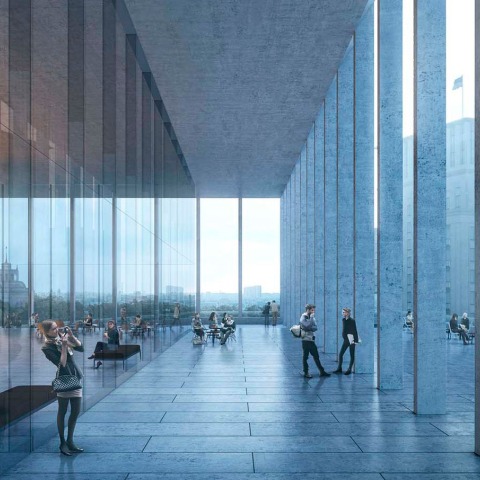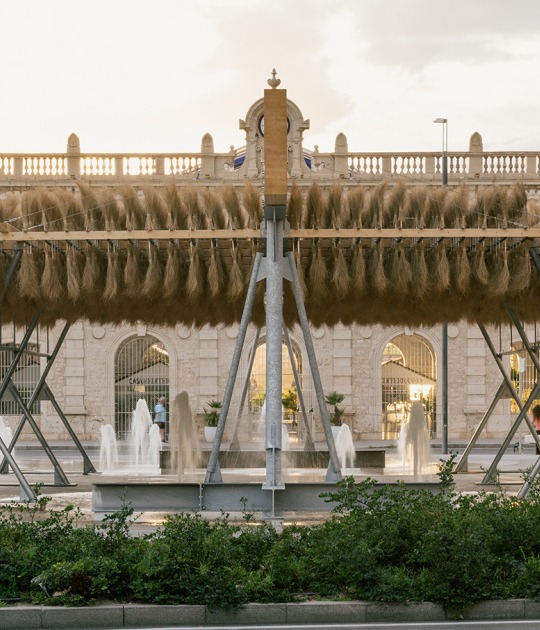The museum will have more than 30,000 square meters and will house exhibition spaces and the so-called House of Freedom of Ukraine. There will be an exhibition from July 13 - August 13, 2018 in the House of Architects in Kyiv showing all Museum projects of the 1st. and 2nd. stage of the competition.
Jury comment
This project is a simple, spiritual and characteristic piece of architecture, well integrated into its urban context, with a high degree of functionality. It is continuing the legacy of European Classical architecture in an interesting and modern way while responding to the complex and partially contradictory requirements of the site and the whole context.
The solution offers a simple and graceful image that can be easily understood to be a museum that is also a memorial. The memories of the Heavenly Hundred Heroes and the respect for the sorrow of those who lost their loved ones create an impressive alliance in a proposal that contains a capacity to rekindle the architectural traditions of both Europe and the Ukraine. One of the most prominent concepts of this entry is the idea of the external ramp.
The route from the Maidan square continues onto the top of the museum providing views to city and thus makes it a convincing climax of this pedestrian route. In this context, the jury recommends to review the exact position of the beginning of the ramp as it is not easy to see for those coming up the hill. However, from the metro station both entries -via ramp and via main entrance on the ground are very well visible. As the authors have described in their conceptual diagrams, the ramp and the roof level also create platforms for some museum activities.
The jury notes that the year-round usability of this ramp must be guaranteed. The jury also thinks that both, museum- and the design teams should be prepared for the eventual spontaneous use of the façade niches along the way for some type of remembrance. After all, they are a reinterpretation of the current temporary memorials in the niches along the Alley of the Heavenly Hundred. The jury appreciates the idea of the internal museum tour starting at the top. The exhibition concept provides the required flexible museum space while putting forward the potential for an interesting spatial experience.
The jury acknowledges the effort made to integrate the “Yolka” into the exhibition but would like to encourage the designers – together with the client and potential exhibition consultants - also to review the use of the whole element as a central feature, as its scale is obviously dominating the basic composition of the museum interior and is blocking a very attractive atrium space that could be used in many ways. This would have the potential to turn the interior, now still a little reminiscent of a mausoleum, into a more playful, flexible landscape of spaces.
The connection to the “House of Freedom” and the placement of ancillary functions are resolved very well. The jury recommends this project to be executed as it believes that it provides a well worked-out design that meets all know requirements and is robust enough to respond to the inevitable changes that will be needed for the final optimization of the museum concept in dialogue between clients, architects and exhibition designers. Ultimately this proposal provides an elegant architectural image that integrates well into the historic context of the Maidan. The European traditions of Classical Architecture are being reinterpreted into a new language that will let this building stand out as one of the most characteristic museums of our time, leading the new institution of the “Museum of Freedom” into a future that will be highly relevant in the international cultural (and political) discourse.




































































